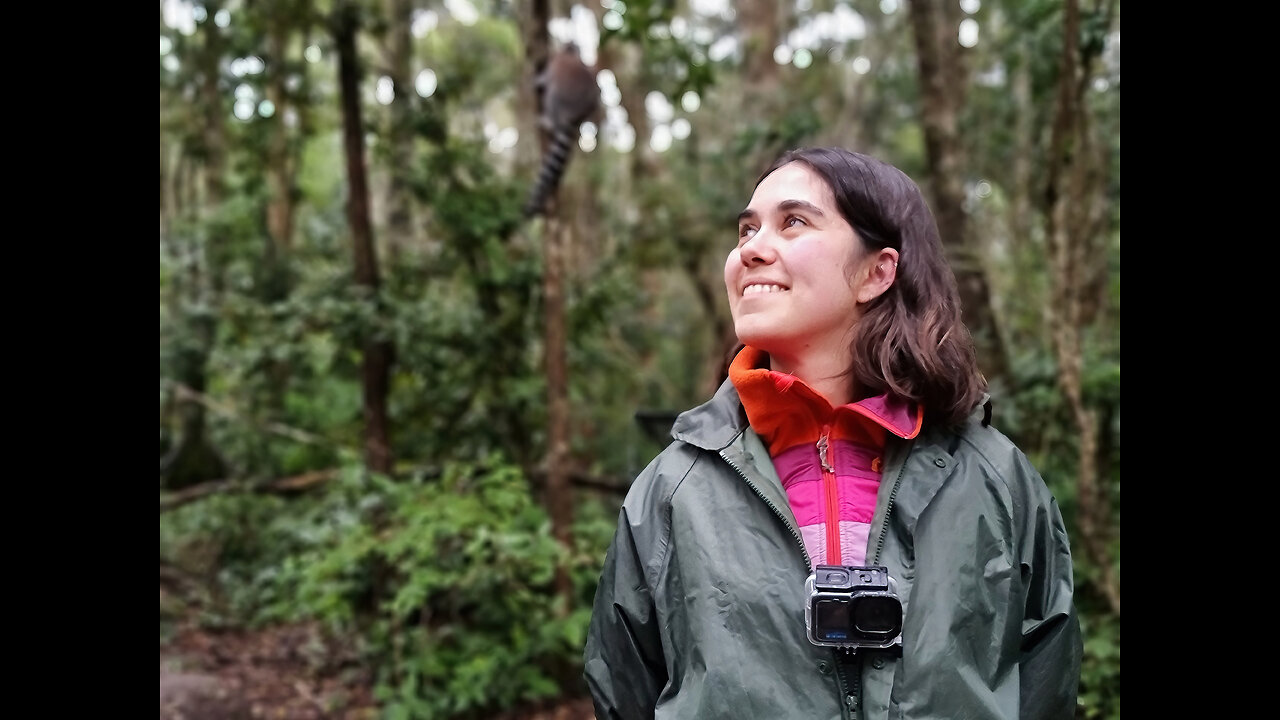Premium Only Content

Watch: Adela Cebeiro Sheds Light on Nut-Cracking Skills of Brown Capuchins at Monkeyland
Reminiscing on Adela’s time at Monkeyland, Marketing Manager, Lara Mostert recalls how one of the receptionists, Ashley-Anne Blaauw told her how much Adela inspired her, having overcome various obstacles and hardships to get to where she is today, through pure determination, focus and drive. She wishes she had met Adela earlier.
Originally from Spain, Adela Cebeiro, 24, is currently a first year PhD student at New York University. Working in the niche field of Primate Archaeology, a hybrid discipline that merges anthropology/primatology and archaeology, she is doing field work at Monkeyland, the world's first free roaming multi-specie primate sanctuary, just outside of Plettenberg Bay. The primary focus of her studies at Monkeyland has been to develop the first systematic analysis of the foraging percussive behaviors and stone tool use undertaken by brown capuchins. While capuchin monkeys are the non-human primates with the most comprehensive stone tool behavior record, both in the wild and in captivity (capuchin tool use has been known since at least the 18th century), these reports of tool use and their ability to undertake complex manipulative abilities, such as nut-cracking, were thought to be limited to captive capuchin groups.
Staying in the nearby Kurland Village, a small rural township with a population of around 5000 mostly coloured and black residents, her typical day starts around 07h30 by walking with the local residents who work at Birds of Eden and Monkeyland. She then visits and photographs the various known nut-cracking sites, spending time with the capuchins and observing them through binoculars while attempting to identify them. This is to be able to work out who’s related to who and how they learn their nut-cracking skills. If they have not already been given nicknames by the local guides, Adela bestows them with the names of people that they remind her of - one with a funny hairstyle got the name ‘Caleb’, after one of her best friends at New York University - another was named ‘Tucho’, after her father, because of his particularly calm demeanor - one of her favorites is ‘Brad’, named after Brad Pitt because of his handsome looks.
Adding to her already impressive repertoire of languages (Spanish, Galician, English, French and basic Portuguese) Adela has been learning Xhosa from her colleagues-turned-friends. “I think it is very important as scientists when we go and work in places outside of where you are from, to try to immerse with the community, because you shouldn’t just go somewhere and take, but to try to give back and learn”. Being her first time in Africa, Adela says while it was a little bit of a “culture shock” at first, the whole experience has made her more humble and appreciate how people live here, being happy and making do with what little they have - “I got inspired by them too, you don’t need much to be happy”.
“The project that gave rise to these results received the support of a fellowship from “la Caixa” Foundation (ID 100010434). The fellowship code is LCF/BQ/EU21/11890023”.
To follow Adela and her work she is on Twitter at @AdelaCebeiro
-
 3:09:10
3:09:10
Barry Cunningham
7 hours agoPRESIDENT TRUMP HAS TAKEN THE MONSTER AWAY FROM THE LEFT! HORROR STORIES WON'T WORK ANYMORE!
57.2K58 -
 1:29:55
1:29:55
WickedVirtue
2 hours agoLate Night Fortnite w/ Friends
13.3K -
 LIVE
LIVE
This is the Ray Gaming
2 hours ago $0.01 earnedCould you be? Would you be? Won't you be my RAYBOR? | Rumble Premium Creator
47 watching -
 1:46:52
1:46:52
JahBlessGames
3 hours ago🎉Come een' and come tru' - VIBES | MUSIC | GAMES
15.1K -
 38:47
38:47
MattMorseTV
5 hours ago $1.10 earned🔴Tulsi just CLEANED HOUSE.🔴
43.7K81 -
 LIVE
LIVE
Reolock
6 hours agoWoW Classic Hardcore | WE'RE BACK!!
203 watching -
 3:46:13
3:46:13
SynthTrax & DJ Cheezus Livestreams
8 hours agoShell Shock Live - The Scorched Earth Remake/Upgrade - 4pm PST / 7pm EST - RUMBLE GAMING
34.4K -
 2:56:57
2:56:57
Illyes Jr Gaming
4 hours agoBack to Black .....Ops 6 w/ ILLYESJRGAMING
21.3K1 -
 1:07:59
1:07:59
BonginoReport
7 hours agoBoston Mayor Defies Trump, Protects Illegals - Nightly Scroll w/ Hayley Caronia (Ep.115)
121K83 -
 40:45
40:45
Donald Trump Jr.
8 hours agoPeace by Peace: Solving One Problem After Another | Triggered Ep.268
69K62